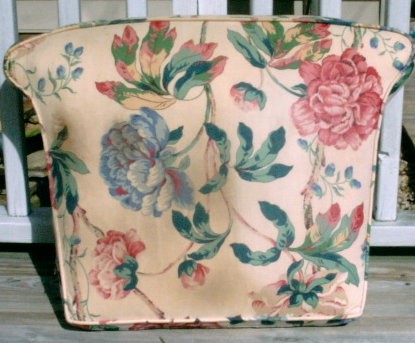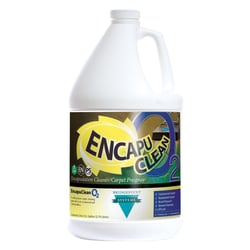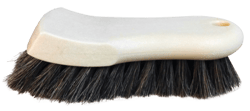A key feature separating encapsulation cleaning from older shampoo techniques is the chemistry. Polymers are added to surfactants used in shampoos with the dry residue from the encapsulate surrounding the soil and fabric as they cure. As a low moisture method, encapsulation is fast drying. All low moisture methods reduce the likelihood of browning when cleaning natural fibers such as cotton. The polymers used in many encapsulating cleaners go a step further in making browning unlikely. For the same reasons, the likelihood of wicking and recurring spots is reduced. After drying the encapsulated soil is vacuumed away over time. Unfortunately, a lot of upholstery is not regularly vacuumed.
Results have been pleasing to both cleaners and their clients. Results are superior to dry foam or standard shampoo procedures. The best results have been reported on light to moderate soil levels, especially when hydrogen peroxide fortified formulas are used. White and off-white fabrics reportedly respond well, which can be problematic with some other methods. Users report higher production rates (i.e. Encapsulation is faster than hot water extraction methods.) It can be common to clean a sofa in 15 minutes or under – start to finish when extraction is not used.
1. Begin with a thorough inspection: As with any upholstery cleaning, you wouldn’t want to get blamed because the couch is missing a leg.
2. Test for the possibility of bleeding: Even though encapsulation is a low moisture method the fabric will get damp. Also, check the integrity of the fabric. Age, sunlight, body oils, use, and other factors may have weakened the fabric. Agitation can tear delicate fabrics or those with existing weaknesses. Decide if the fabric is an appropriate candidate for encapsulation cleaning. Always err on the side of safety and gaining good results.
3. Thoroughly vacuum: Vacuum the face of the fabric and crevices.
4. Apply an encapsulating cleaning agent: This may be done by spraying or whipping the cleaner into foam and applying it with a sponge or a horse hairbrush. The foam method uses even less moisture and might be appropriate for cleaning natural fibers.
5. Agitation: This may be provided by a horsehair brush or using either a pad or bonnet attached to a variable speed drill.
6. Clean the cushions: Place the cushions in a Tee-Pee style on a drop cloth or white paper. Tip the chair or sofa forward so that the outside back is now up and horizontal. This makes the surface easiest to clean with a minimum of bending. Follow a similar procedure to clean the outside arms. Finally, tip the piece backward to clean the inside back
7. Use cotton towels to remove foam and soil: In some cases, a rinse using hot water extraction is the final step and rinses away most encapsulated soil. This would be necessary for heavily soiled furniture. This rinse, while often necessary, limits the lasting benefit of any encapsulation cleaner to limit wicking and provide soil resistance from the polymer over time.
In short, encapsulating upholstery is a great choice for moderately soiled fabrics where a low moisture method is necessary to protect the integrity of the fiber.
Heavily soiled cushion during encapsulation cleaning. Most of the right side has been completed. Photo by Ades Gros used with permission.
by Scott Warrington
Featured Products

Bridgepoint Systems, Encapsulation Cleaner, Encapuclean O2, 1 Gallon

